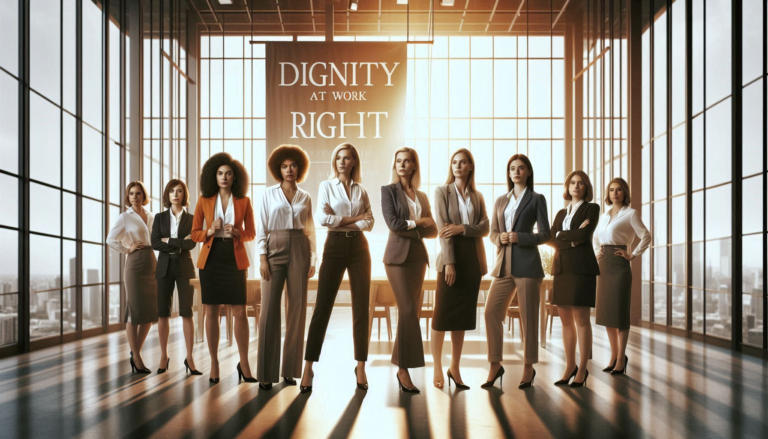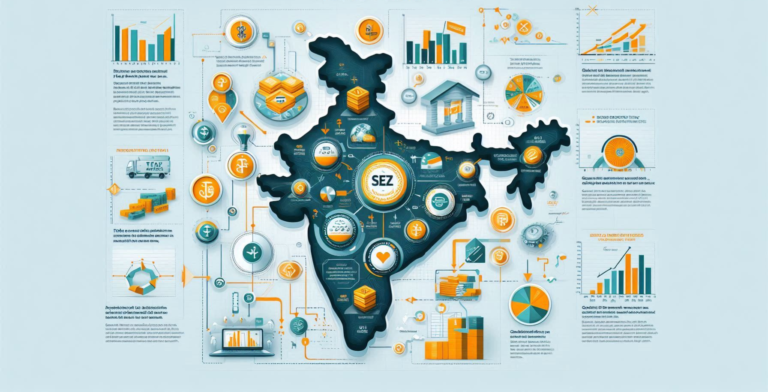Over the course of several centuries, the expansion of women’s educational
opportunities in India has been a journey that has been defined by both substantial
progress and problems. To provide a general account of its development, below is:
In ancient India, women were able to receive an education in a variety of topics,
including religion, philosophy, and certain scientific disciplines. This knowledge was
available to them from the early history period. The standards of society were more
limited during the medieval period, which resulted in the educational options available
to women being restricted primarily to teaching them religious teachings and household
skills.
During the Colonial Era, which lasted from the 18th to the 19th century, the British
colonial rule brought about a number of changes. The education of women was a cause
that was supported by social reformers and missionaries such as Raja Ram Mohan Roy.
Girls from privileged families were able to have some access to formal education as a
result of the founding of schools specifically for girls and the widespread adoption of
English language instruction.
Pre-Independence (Early 20th Century): During this time period, social reform
movements, including those led by Jyotirao Phule, Ishwar Chandra Vidyasagar, and
others, placed a significant emphasis on the education of women as an essential
component of social change. There was an increase in the number of schools and
colleges that were open to female students, despite the fact that access was still
restricted, particularly in rural areas.
Following India’s independence in the middle of the 20th century, the Constitution of
India, which was ratified in 1950, ensured that women were granted equal rights and
opportunities, including those in the field of education. The expansion of educational
infrastructure for women was the primary focus of government initiatives such as the
establishment of the University Grants Commission in 1953 and subsequent Five-Year
Plans.
The National Policy on Education, which was first implemented in 1968 and again
updated in 1986, placed a strong emphasis on the education of women and sought to
reduce the gender gap in educational opportunities. In an effort to encourage girls from
underprivileged neighborhoods to seek an education, reservation policies and
scholarship opportunities were implemented respectively.
Recent Developments (Late 20th Century to Present Day): During the 1990s and early
2000s, there was a rise in the number of girls enrolling in primary and secondary
education. In the year 2001, the Sarva Shiksha Abhiyan was an initiative that intended
to attain the goal of universal basic education, which included participation from girls.
In rural and marginalized communities, efforts are still being made to address
difficulties such as the high rate of students dropping out of school, the quality of
education, and hurdles. The accessibility of vocational training and higher education
possibilities for women has increased, which has contributed to the economic
empowerment of women.
In spite of the progress that has been made, gender inequities continue to exist,
particularly in rural areas and among communities that are marginalized. Following are
some opportunities and challenges.
There are instances when girls are discouraged from completing their education due to
social and cultural standards, which can have an effect on enrollment and retention
rates. Technology and online education are becoming increasingly exploited in order to
increase access to education for women living in rural areas and to bridge the gaps that
exist between them.
The evolution of women’s education in India has been distinguished by achievements;
nonetheless, achieving full gender parity remains a continuing struggle that requires
policy support, societal change, and persistent investment in educational facilities and
opportunity. Overall, this is a significant achievement.

There are several different ways in which education plays a significant role in
empowering women:
1) Enhancement of Decision-Making Capabilities : Through education, women are
able to acquire knowledge and develop their ability to think critically, which
enables them to make educated decisions regarding their lives, including their
health, professions, and families.
2) Economic Empowerment : Women who have completed their education have
access to more employment possibilities and have the ability to earn more
money. They are less dependent on others as a result of their economic
independence, which also improves their socio-economic position.
3) When it comes to health and well-being : Through education, individuals are
able to become more aware of health issues, which ultimately results in
improved healthcare decisions and practices for both themselves and their
families. It is more probable that educated women will seek prenatal care,
immunize their children, and adopt healthier lifestyles than women who have
had less education.
4) Education gives women the ability to participate more actively in community
and political activities, which is the fourth reason why education is so important.
The ability to advocate for their rights, question practices that are
discriminatory, and contribute to the growth of society is available to them.
5) Family and community development are the fifth topic : It is common for
educated women to place a higher priority on their children’s education, which
ultimately results in higher general literacy rates and enhanced opportunities for
the following generation. They also play important roles in the activities that are
aimed at community development.
6) “Breaking Stereotypes and Norms,” which includes : It is through education that
women’s skills in a variety of disciplines are demonstrated, which challenges
the old gender roles and preconceptions that exist. By doing so, we contribute
to the transformation of societal perceptions and the advancement of gender
equality.
7) Lessening the Danger of Being Victimized by Violence : Through education,
women can have the ability to detect and resist abusive circumstances, seek
help, and access resources that will enable them to protect themselves from
physical, emotional, and financial abuse.
8) Entrepreneurship and innovation are the eighth topic : Women with higher levels
of education have a greater likelihood of starting their own firms, innovating,
and making contributions to economic growth and development through
leadership roles and entrepreneurial endeavors.
To summarize, education not only gives women the ability to make their own decisions,
but it also makes a contribution to the overall development of society by enabling the
entire potential of fifty percent of the population to be realized. To put this into
perspective, investing in the education of women is not just a matter of justice and
rights, but it is also a strategic requirement for the advancement of society and the
maintenance of sustainable development.
When it came to advancing girls’ education and social reform in India throughout the
19th century, Savitribai Phule and her husband, Jyotirao Phule, were two of the most
influential figures in the country. The contributions that they made were extremely
helpful in questioning the prevalent societal norms and pushing for the rights of women
and populations that were marginalized. This is how they made a contribution to the
education of young women:
The first school for girls was created in Pune in 1848 by Savitribai and Jyotirao Phule.
This was a breakthrough endeavour at a time when education for females, particularly
those from lower castes, was strongly discouraged. – Savitribai and Jyotirao Phule were
the pioneers in the establishment of schools for girls. They were met with great
opposition and animosity from conservative sections in society, but they persisted in
their efforts to provide education to girls who would not have had the opportunity to
get it otherwise.
Savitribai Phule was an active participant in the teaching process at the school that they
established. This was done in order to promote literacy and empowerment. Her
presence in the classroom as a female educator was revolutionary in and of itself since
it posed a challenge to the conventional roles that society has traditionally allocated to
women. Their goal was to provide young women with the knowledge and abilities that
would enable them to express their rights and make important contributions to society.
This was accomplished by providing education to young women.
Advocacy for Social Equality :- They were steadfast advocates for social equality and
the upliftment of oppressed people, especially women and lower castes. – They both
were successful in achieving their goals. Through the use of education as a tool, they
were able to combat discrimination based on caste as well as restrictive societal
conventions that limited the rights and freedoms of women.
Writing and Publication :- Savitribai Phule was also a poet and writer who utilized her
literary works to bring attention to social issues and advocate for social justice and
women’s rights. – She was also a supporter of women’s rights. Through her works, she
frequently addressed topics like as education, empowerment, and the necessity of social
transformation, which motivated others to become involved in the struggle for change.
Legacy and Influence :- The efforts of Savitribai and Jyotirao Phule provided the
groundwork for later campaigns and initiatives in India that tried to promote girls’
education and gender equality. – Savitribai and Jyotirao Phule were influential figures
in India as well. As a result of their work, numerous generations of social reformers and
educators have been encouraged to carry on their mission of empowering women
through education and confronting behaviours that are discriminatory.
In conclusion, Savitribai Phule made a significant and potentially life-changing
contribution to the education of young women. She was a pioneer in the field of
education, and she did it alongside her husband, Jyotirao Phule. These initiatives not
only made it possible for females to receive an education, but they also made a
contribution to the larger fight for social justice and equality in Indian society.
There is reason to be optimistic about the future of women’s education in India;
nevertheless, there are also obstacles that must be overcome in order to achieve long-term success and enhance women’s empowerment. The following are some of the most
important factors of the future of education for women in India:
- The expansion of access and infrastructure : – The primary focus of efforts should be
on increasing the number of girls in rural and underprivileged communities who have
access to high-quality educational opportunities. The construction of more schools, the
enhancement of existing infrastructure, and the guarantee of safe and conducive
learning environments are all included in this. - The Promotion of STEM Education :- It is of the utmost importance to encourage
young women to seek education in the disciplines of science, technology, engineering,
and mathematics (STEM) in order to better prepare them for future employment in
industries that are vital in the expansion of the economy and the development of new
ideas. - Digital Literacy and Technology Integration :- Embracing digital literacy and
incorporating technology into educational settings can assist in helping to close access
gaps, improve learning outcomes, and better prepare young women for the digital
economy. - The Quality of Education :- It is of the utmost importance to guarantee a quality
education that is in line with the principles of inclusivity, equity, and gender-sensitivity.
Training instructors, bringing curriculum up to date, and promoting teaching methods
that cater to a variety of children’s educational need are all part of this process. - In addition to imparting knowledge, education should also encourage abilities such
as critical thinking, problem-solving, and leadership among young women. This is
referred to as empowerment and leadership development. They will be able to
effectively contribute to society and engage completely in the decision-making
processes as a result of this empowerment. - Addressing Societal standards and hurdles :- Cultural hurdles, gender stereotypes,
and persistent societal standards continue to be obstacles that prevent girls from
receiving an education. It is important that efforts be focused on changing mindsets,
increasing awareness, and engaging communities in order to encourage the education
of girls. - Investment in the Education Sector :- It is essential to make sufficient investments in
the education sector, which includes providing funds for schools, scholarships, teacher
training, and educational resources. This is necessary in order to improve educational
outcomes and reduce gender gaps. - Policy and Governance :- It is essential for policymakers, governments, and
stakeholders to maintain their commitment in order to successfully adopt and enforce
policies that encourage girls’ education, guarantee accountability, and track progress. - Partnerships and Collaboration :- initiatives to improve girls’ education and
accomplish sustainable development goals can be amplified through collaborative
initiatives that involve not just the government but also civil society organizations, the
commercial sector, and foreign agencies. - Monitoring and assessment :- It is vital to perform regular monitoring and assessment
of educational efforts in order to keep track of progress, recognize obstacles, and
implement evidence-based solutions for continuous development.
In conclusion, although there have been great advancements made in the field of
women’s education in India, there is still a need for concentrated efforts to ensure that
the remaining issues are addressed and potential for revolutionary change are taken
advantage of. The Indian government has the ability to unleash the potential of girls
and women as agents of social progress, economic development, and inclusive growth
in the 21st century if it places a higher priority on education for these groups.
References :
Link 1 : https://www.jetir.org/papers/JETIR1907P04.pdf
Link 2 : https://www.motherhooduniversity.edu.in/pdf/Publications/2016/Khushboo%20Singh.pdf
Link 3 : https://www.hercircle.in/engage/get-inspired/trending/women-education-in-indiahistory-and-education-status-of-women-in-india-4031.html
Link 4 : https://bise.edu.in/womens-education-in-india/
Link 5 : https://lddashboard.legislative.gov.in/sites/default/files/COI…pdf




